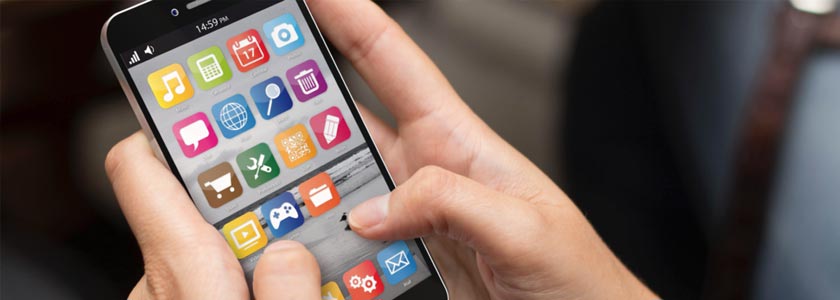
To say that we are in the middle of a mobile revolution is a gross understatement. According to GSMA, five years ago just one in 10 people owned a mobile subscription. Today, mobile subscriptions are owned by half of the world’s population—and an additional one billion mobile subscribers are expected by 2020.
What’s causing this surge in mobility? Smartphones.
As GSMA pointed out, these devices already account for 60 percent of mobile broadband connections in developed markets. And there will be 2.9 billion more smartphone connections across the globe by 2020, too.
Smartphones aren’t just reaching more consumers, though. They are forever changing the way that consumers interact with the world around them. In fact, smartphones are becoming completely integrated into the fabric of society.
“[Two big trends in 2016 will be] mobility as a primary compute platform and [devices] fading to the background,” explained Benjamin Robbins, co-founder, Co-CEO and Principal at technology consulting firm Palador. “It’s the whole notion of work-life integration, rather than work-life balance. That’s what I mean by [devices] fading into the background; they just become so integrated with what you do.”
Consider a recent study from Bank of America, which shows that 71 percent of Americans sleep with or next to their mobile phones. More than one-third of respondents reach for their mobile devices first in the morning (BEFORE their coffee, toothbrush or significant other). About 23 percent of Americans have fallen asleep holding their smartphones (this figure rises to 44 percent for millennials). And 86 percent of respondents claim that they check their smartphone at least a few times per day, with 36 percent checking their phones constantly.
“You’re in the car and you start something, and you go into the office and you start another task, and you move into a conference room and you just keep right on going,” Palador explained. “Maybe another way to say that would be comfortable computing: There’s just a comfort and familiarity with mobile working that it’s no longer a big deal.”
This begs the question: What exactly are people doing on their smartphones? Most of the time, they are using mobile applications. According to Go-Globe, mobile applications now account for more than half of all time spent on digital media. What’s more, smartphone users spend 89 percent of their media time using mobile applications. And 85 percent of people prefer using native mobile applications over mobile websites.
Now, here’s the kicker:
Because of the convenience that mobile applications afford, people are actually talking less and less on their phones. Research from Attentiv shows that consumers are more inclined to communicate using social channels, email and text messages rather than making voice calls. Chatting over short message service (SMS) or social channel is faster and more convenient, and so consumers are naturally taking the path of least resistance and using these methods first.
In light of all of these studies, survival in 2016 from a customer service standpoint requires embracing a multichannel strategy. Your company needs to look beyond voice service to the channels where your customers are spending all their time.
Bright Pattern provides a flexible, cloud-based platform that your agents can use to communicate with customers over any channel that they choose. From live in-app support to SMS to voice, Bright Pattern will make your mobile customer service transition completely seamless.
Click here to get started today.

